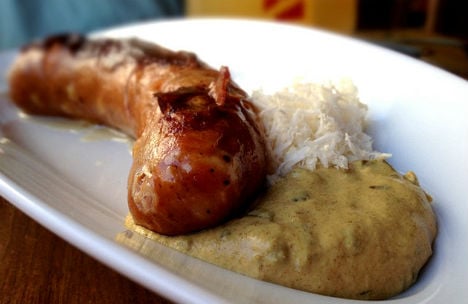Commenting on social media Rupprechter said that the report was a “farce” and that as far as Austrian sausages are concerned “they are and remain the best”. He said that the WHO report was spreading fear, and tweeted an image of himself tucking into a huge plate of cold cuts (pictured on the right).
Krebswarnung b Fleisch&Wurst ist Farce&verunsichert nur d Menschen!Österreichs Wurst ist und bleibt die Beste!AR 😉 pic.twitter.com/n0wwTdqFxD
— Andrä Rupprechter (@BMRupprechter) October 27, 2015
“Placing ham on the same level as asbestos is outrageous nonsense and only serves to unsettle people,” Rupprechter wrote in a Facebook post on Tuesday.
The WHO report said that 50g of processed red meat a day – less than two slices of ham or one sausage – increased the chance of developing bowel cancer by 18 percent.
It is the first time the WHO has said that there is “sufficient evidence” to make the link between processed meat and cancer. It said that red meats were “probably carcinogenic” but that there was limited evidence.
Processed meat is meat which has been smoked, cured, or had salt or preservatives added to it to extend its shelf life or change its taste. It is the chemicals involved in the processing which could be increasing the risk of cancer.
The WHO report findings are sure to be felt keenly in Austria, which is famous for its gourmet hams and different varieties of cured sausages. Austrians devoured a whopping 65.3 kg of meat in 2013.
Pork consumption in particular has increased in Austria in recent years, overtaking beef, veal and poultry. Pig farming remains an important part of Austria’s agriculture. Around 2.9 million pigs are kept on 25,600 farms, according to figures from the Ministry of Agriculture.
Within Europe, only jamón-loving Spaniards consume more pork than Austrians (with Denmark and Germany close behind).
The new guidance on processed meat is also bad news for wurst-gobbling Germans, hot-dog-loving Swedes and the sausisson-scoffing French.



 Please whitelist us to continue reading.
Please whitelist us to continue reading.
Member comments